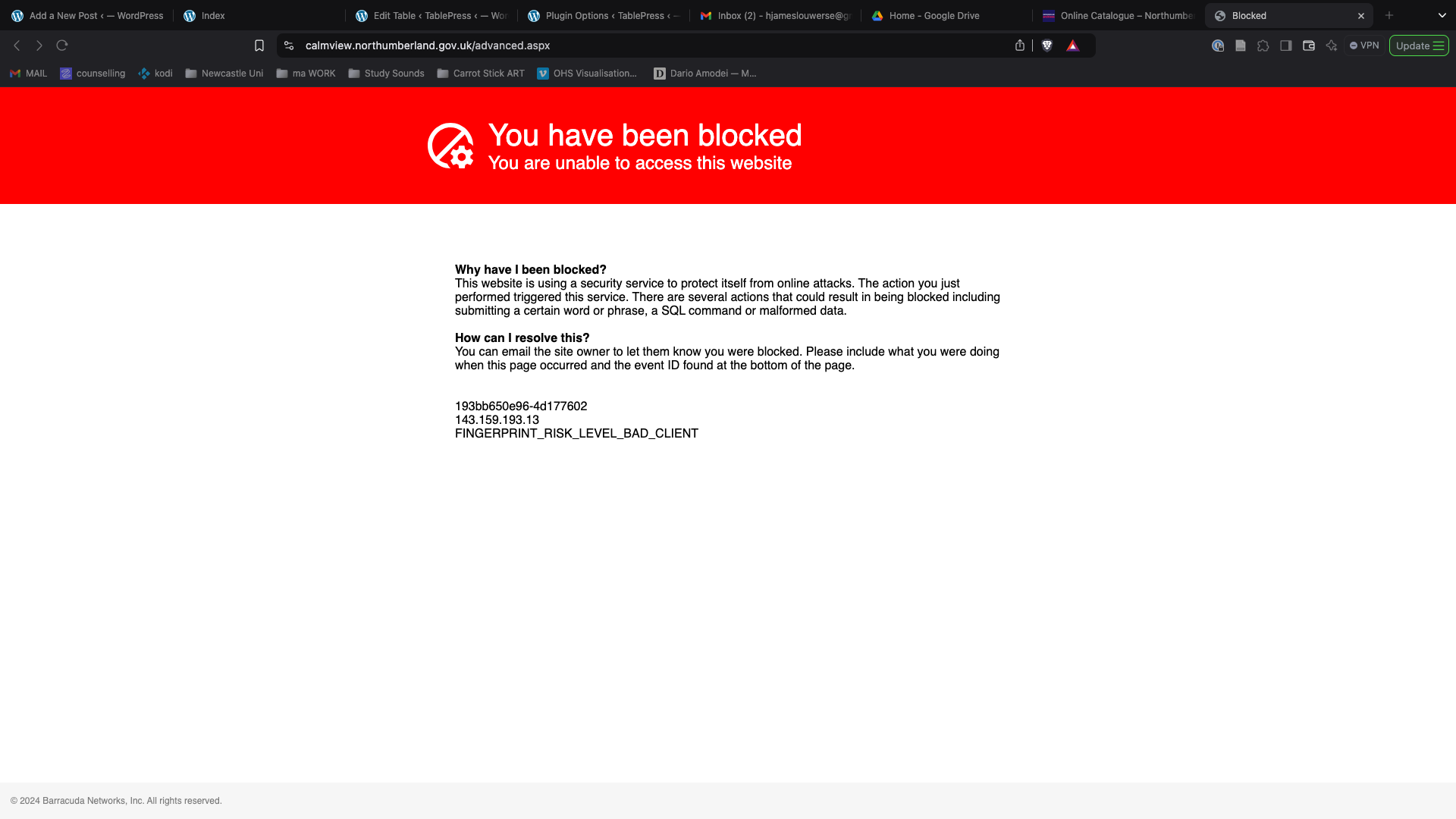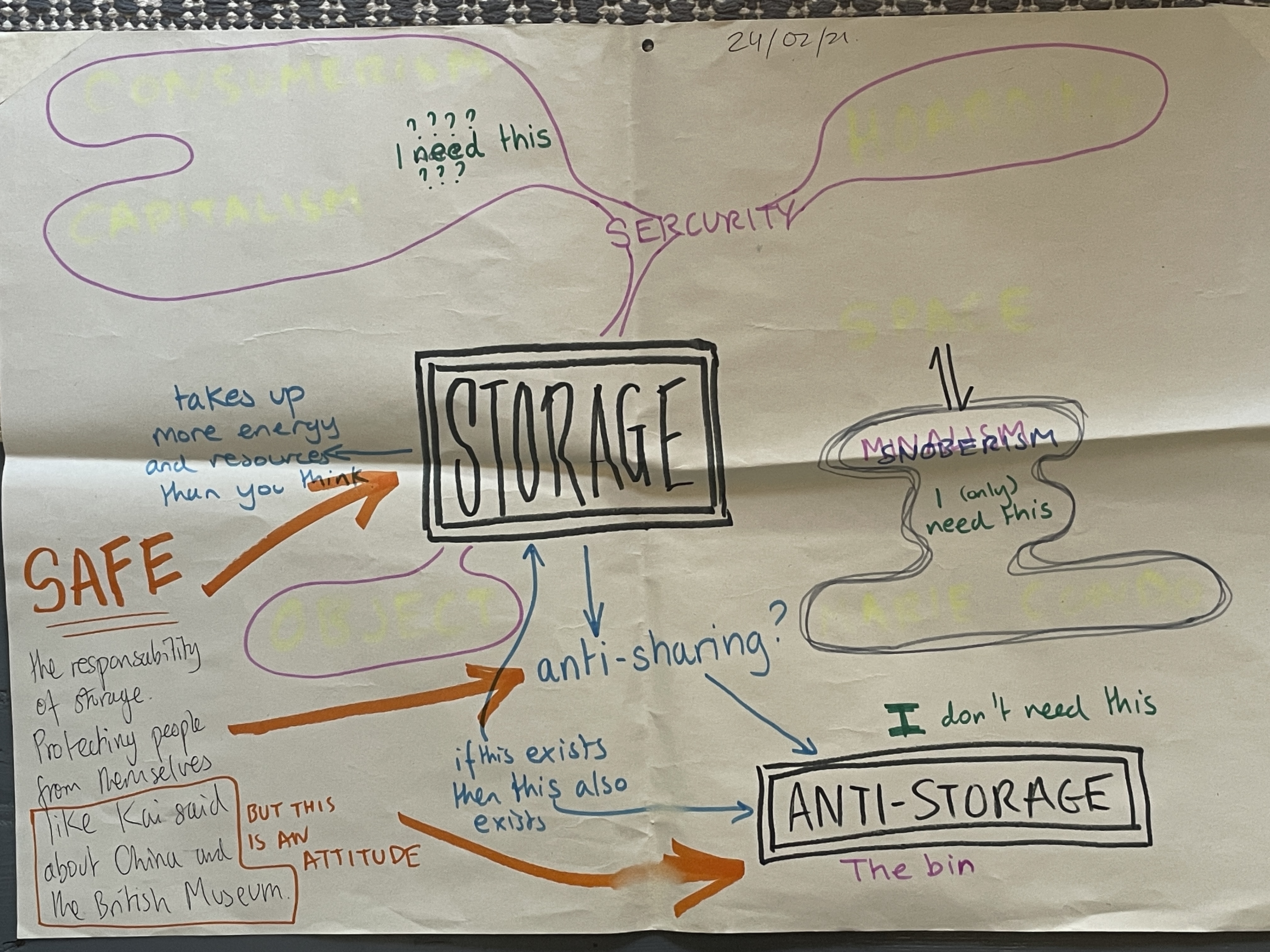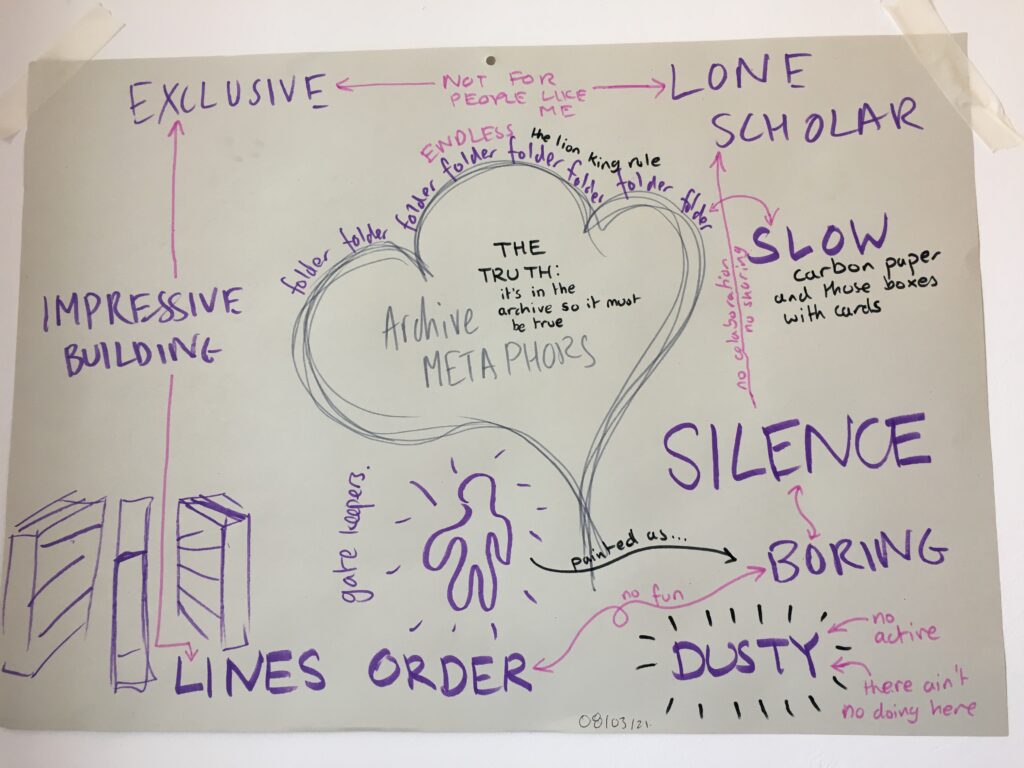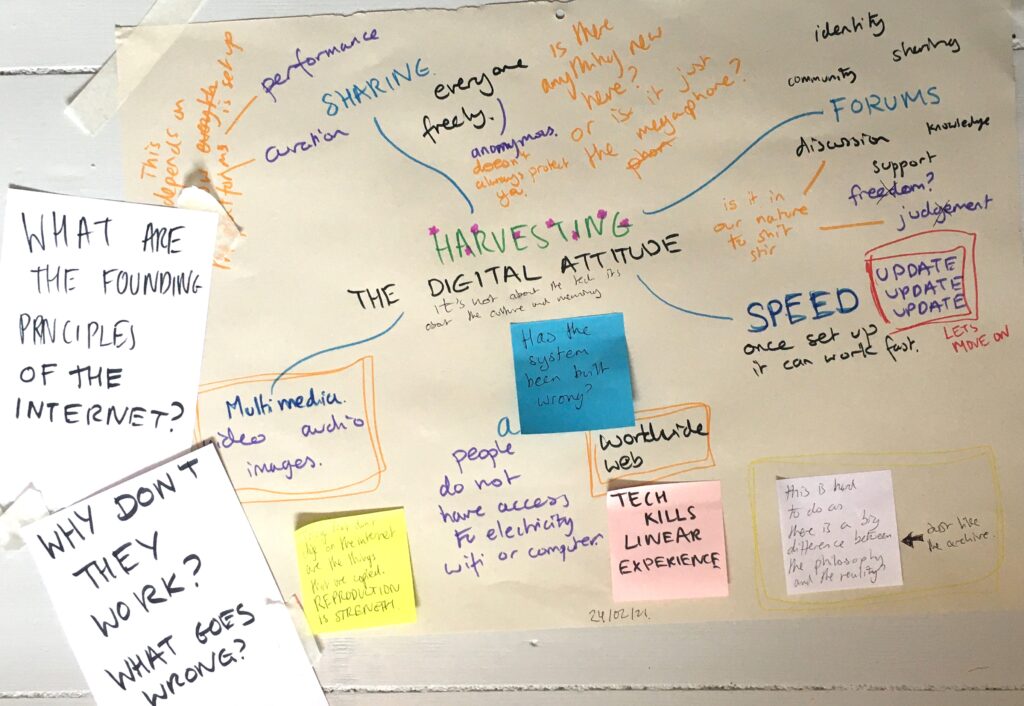
Tag Archives: Access
OHD_RPT_0263 NT property recommendations for PhD placement
NT property recommendations for PhD placement
Hannah James Louwers
21 June 2023
Questions to ask
Would you have good access to the local people who might know of the interviewees?
Are you looking to show how NT should do oral history projects or how they should handle collections of older recordings stuck on shelves?
Properties
Alderley Edge Landscape
Location: Cheshire
Notes on property: They only have two full time rangers and it is a landscape property, not a house so it is unlikely they will have a collections team.
No. of recordings: 80
Main interviewers: John Ecclestone
Date of recordings: Late 1990s – early 2000s
Copyright statues: 17 recordings have copyright and there are a handful of orphan works. Copyright is confusing here, there seems to be focus on getting copyright from the interviewers.
Notes on recordings: Big project in collaboration with the Manchester Museum. There are also several lectures. It also has a website: Alderley Edge Landscape Project (derbyscc.org.uk)
Hannah’s recommendation: ⭐ ⭐ It is one of the biggest projects but because the property is unlikely to have a collections team, you will have no one to champion the work.
Attingham Park
Location: Shropshire
Notes on property: An 18th-century estate. Property ‘Trust’ property. BIG!
No. of recordings: 43
Main interviewers: Edward Payne, Michael Ford, John Ecclestone
Date of recordings: 1960s – 2000s
Copyright status: Half copyright, half not.
Notes on recordings: These recordings came in tranche 5, which was all CDs, many copied from original tapes. Note that some recordings in tranche 5 might be duplicates of recordings in tranche 1.
Hannah’s recommendation: ⭐ ⭐⭐ A lot of recordings taking over a very long period of time. I imagine this might be a difficult one.
Basildon Park
Location: Berkshire
Notes on property: Big 18-century estate. Very ‘Trust’
No. of recordings: 12
Main interviewers: Mary Turton
Date of recordings: 1980s – 2000s
Copyright status: Half have copyright, half does not
Notes on recordings: Many different interviewers
Hannah’s recommendation: ⭐ ⭐ ⭐ ⭐⭐ A small set of recording which might be more manageable for a three month project.
Biddulph Grange Gardens
Location: Straffordshire
Notes on property: It is a garden, so they are unlikely to have collection staff.
No. of recordings: 48
Main interviewers: John Ecclestone, Michael Ford, Bill Malecki
Date of recordings: 1980s – 2000s
Copyright status: 5 recordings have copyright and there are some orphan works
Notes on recordings: Bill Malecki is also the garden and was interviewed
Hannah’s recommendation: ⭐ ⭐ ⭐ This collection might be too big for the three month placement and I am not sure of the staff set up on site. You are likely to have to work with the regional curator.
Blicking Hall
Location: Norfolk
Notes on property: Jacobean mansion with big garden.
No. of recordings: 18
Main interviewer: Nick Ross
Date of recordings: 1980s, and one in 1990
Copyright status: One has copyright
Notes on recordings: Nick Ross did all his recordings in 1986-1987. There is one recording of 11th Marquis of Lothian which was recorded during WW2.
Hannah’s recommendation: ⭐ ⭐ ⭐ ⭐ Small collection but recorded a long time ago which might make things difficult.
Calke Abbey
Location: Derbyshire
Notes on property: Home and estate.
No. of recordings: 41
Main interviewers: Kerry Usher
Date of recordings: 1980s – 1990s (most are unknown)
Copyright status: Many have no accession form
Notes on recordings: Only five recordings were not recorded by Kerry Usher
Hannah’s recommendation: ⭐ ⭐ ⭐ ⭐ This one could be very easy if the property just forgot to give the copyright forms or it will be very difficult.
Clent Hills
Location: Worcestershire
Notes on property: It is a walking route and not an estate, so will not have a collection team
No. of recordings: 11
Main interviewers: Tamsin Mosse
Date of recordings: 2009-2010
Copyright status: One recording has copyright
Notes on recordings: These were recorded onto CDs from a Flash Memory Card by John Ecclestone in 2010
Hannah’s recommendation: ⭐ ⭐ ⭐ ⭐ A more recent one which might make things easier and make up for the fact it is a walking route and not an estate
Clumber Park
Location: Nottinghamshire
Notes on property: Park with a walled garden, a chapel, and ornamental bridge.
No. of recordings: 14
Main interviewers: Leah Lawman, Alistair McDougal
Date of recordings: 1990-91
Copyright status: No copyright at all
Notes on recordings: Classic project run in the early 1990s by the looks of it.
Hannah’s recommendation: ⭐⭐⭐ Could be a good case study because it is clearly a case of an oral history project, which is how many of the NT oral histories will be collected
Coughton Court
Location: Warwickshire
Notes on property: A tudor house in Warwickshire. Classic NT and probably very popular
No. of recordings: 13
Main interviewers: Michael Ford
Date of recordings: 1970s -1980s
Copyright status: One recording has copyright
Notes on recordings: This is a classic early oral history project for NT. Robin Bryer and Michael Ford did some of the earliest recordings for the Trust. Also this one is likely to have duplicates in tranche 5, because tranche 5 consists of CDs made from cassettes. I suspect BL might have some of the original cassettes.
Hannah’s recommendation: ⭐ ⭐ ⭐ ⭐⭐ It is a classic NT oral history project and will be a good example of how to handle material from project long gone by rather than be a good example of how to do contemporary projects.
Dudmaston
Location: Shropshire
Notes on property: Country house still lived in
No. of recordings: 14
Main interviewers: Bill Gatter, Jeremy Milln, Sarah Kay
Date of recordings: 1980s-2010s
Copyright status: No copyright
Notes on recordings: John Ecclestone worked as sound recordings on most interviews. Originally recorded on mini disc but the BL only has the CDS from tranche 5. (Yes, someone was recoding on mini disc in 2012).
Hannah’s recommendation: ⭐ ⭐ ⭐ ⭐⭐ It is a small collection recorded over a wide period of time and none have copyright.
Dunham Massey
Location: Cheshire
Notes on property: Garden, deer park, and a house
No. of recordings: 70
Main interviewers: Peter Lee, James Rothwell
Date of recordings: 1980s – 1990s
Copyright status: One big chunk does have copyright, another chuck have no accession forms, and there are some that have the reuse forms which do not include the word copyright.
Notes on recordings: Many different interviewers.
Hannah’s recommendation: ⭐ ⭐ ⭐⭐ Big collection with everything present but it might be too big for a three month project
Hardwick Hall
Location: Derbyshire
Notes on property: Classic ‘Trust’
No. of recordings: 25
Main interviewers: Tim Whittaker, Alistair McDougal
Date of recordings: 1980s-1990s
Copyright status: No copyright
Notes on recordings: Possibly two different oral history projects one in the 1980s and one in the 1990s
Hannah’s recommendation: ⭐ ⭐ ⭐ ⭐⭐ A classic Trust property with an average amount of recordings.
Monk’s House
Location: East Sussex
Notes on property: Leonard and Virginia Woolf’s 16th-century country retreat. Smaller property
No. of recordings: 12
Main interviewers: Patricia Tate, Malcolm Billings
Date of recordings: 1990s
Copyright status: No copyright
Notes on recordings: Patricia Tate is likely to have died or be over 100 years old. There are also a lot of radio recordings for this property
Hannah’s recommendation: ⭐ ⭐ ⭐ ⭐⭐ A smaller property and collection might be more manageable
Osterley Park
Location: London
Notes on property: House and parkland
No. of recordings: 18
Main interviewers: Jean Price, Gwyneth Learner, Lucy Tusa
Date of recordings: 1989 – 2000s
Copyright status: No copyright
Notes on recordings: Jean Price recorded in 1989, Gwyneth Learner in the 1990s and Lucy Tusa in the 2000s
Hannah’s recommendation: ⭐ ⭐ ⭐ ⭐⭐ A London based property might mean you are able to go and rummage around their cupboards for copyright forms. Also an average sized collection made of three bouts of recordings.
Powis Castle
Location: Powys, Wales
Notes on property: Medieval Castle (not very Trust)
No. of recordings: 21
Main interviewers: Michael Wynne Griffith
Dates of recordings: UNKNOWN
Copyright status: No copyright
Notes on recordings: A very messy collection. Many of the interviews do not have an interviewer noted in the catalogue
Hannah’s recommendation: ⭐ ⭐ A challenge
West Wycombe Village and Hill
Location: Buckinghamshire
Notes on property: Mansion and parkland
No. of recordings: 19
Main interviewers: Olga Macdonald, Alison and Peter Gieler
Dates of recordings: 1990s – 2010s
Copyright status: The more recent recordings one have copyright. The older ones recorded by Olga do not.
Notes on recordings: Olga was later interviewed in the more recent project. I suspect the more recent project was run by volunteers.
Hannah’s recommendation: ⭐ ⭐⭐⭐ The first project does not have copyright sorted but they clearly have sorted everything out for their more recent project. They might be easy to work with if they are familiar with oral history already.
OHD_WRT_0257 Possible activities and outputs of placement at NCBS
Summary of placement activities and planned outcomes
Original:
During this placement I am looking to do a critical investigation in the past, present, and possible future culture of the archive at NCBS. I will have meetings with current members of staff and others who have previously been part of the archives’ eco system. The main aim of this placement is to look at how an archival habitus is established and how it might be enhanced and supported through the systems and processes of the archive. I will also engage with the day-to-day activities of the archive, which will include experiencing the day-to-day collection of archival materials and public engagement projects.
Levels of Access
If Archives at NCBS is thinking of scaling up and moving material online there are several issues to consider, especially when expanding public access such as, data protection, copyright, the format of the material, to name but a few. And because there are so many factors, different archival material will require different levels of access. I am interested in, how decisions are made about levels of access are and how access is assigned [GS1] to archival materials. Access to oral histories can be especially tricky. I believe tackling this issue will involve identifying the different spaces where people can access material, what the terms and conditions are for each of these spaces, and a matrix which helps categorise where individual archival material can be put.
Institutional memory and the grant cycle
More than 60 students and professionals coming from a variety of career backgrounds and age groups have worked within the walls of Archives at NCBS. This richness of diversity has made the Archives into the innovative and open space it is today. However, this situation does have its drawbacks especially in combination with the grant cycle. A grant often requires things to be achieved within a set time limit, meaning you want to waste as little time as possible. You do not want the new intern spending a lot of time learning all the unexpected quirks of the Archive, exploring ideas that have already been tested, or establishing relationships already established by their predecessors. So how do you avoid losing time? How do you transfer institutional memory from one intern to the next? This is something I would like to explore and attempt to find solutions which help people pick where others left off allowing the Archive to work more efficiently within the grant cycle.
The Archives at NCBS and NUOHUC collaboration project[GS2]
This is probably something to be explored further down the line when certain meetings have been had. From what I have deduced from the few conversations I have had about this project; some thought needs to go into what exactly will be collected. This includes archival material, as there has been mention of getting oral history participants to draw, and legal material as there might be cases where participants are unable to read certain forms. I am happy to contribute my thoughts to this project as I am interested in the relationship between the producers of archival material and the archive.
[GS1]Unsure if this is what you mean…
[GS2]Excellent points
OHD_RPT_0256 Options for making oral histories accessible
Tech options for making oral history recordings accessible
V1. January 30 2023
Hannah James Louwerse, Archives at NCBS
Making oral history recordings accessible to people has been infamously difficult, with the oral historian Michael Frisch referring to the issue as “oral history’s deep dark secret”. There have been many attempts to solve this problem with some being more successful than others. By analysing the history of oral history technologies one can see how using technology to access to oral history recordings depends on three factors: maintenance, ethics, and user-friendliness. This short report will go through each of these factors bringing examples of oral history technologies to explain what you should look for when seeking a solution to putting oral history recordings online.
- Maintenance
Maintenance is often the biggest killer of solutions to the deep dark secret of oral history. Maintenance depends on a continuous supply of money and labour, which is not always easy to get hold of, especially within grant cycles. It is therefore essential to think about the maintenance necessary to sustain a technology which allows access to oral history recordings. How you do this depends on the source of the technology and how it was developed.
- Tailor-made, in house development and maintenance
Creating your own digital oral history archiving system allows it to be perfectly tailor to your collections needs. However, it also means the maintenance of this system is solely in your hands, which can be very risky, especially when working within grant cycles. Projects like the Visual Oral/Aural History Archive (VOAHA) created by Sherna Berger Gluck at California State University, Long Beach and Civil Rights Movement in Kentucky Oral History Project Digital Media Database developed by Doug Boyd built tailor-made technologies specifically for their existing oral history collections, either developing the technology themselves or hired someone to do it for them. At the time they were the height of technology, but when the money ran out there was none left to maintain the archives/databases. Both VOAHA and Boyd’s Civil Rights Movement in Kentucky Oral History Project Digital Media Database were “digitally abandoned” and left vulnerable to inevitable technical obsolescence and online hackers (Boyd and Larson, 2014, p. 7; Boyd, 2014, p. 90). In the end the two projects were absorbed by their respective universities’ libraries.
1.2 Use existing specialist oral history software
By using specialist oral history software, the maintenance is no longer your responsibility, which is both a risk and a benefit. The benefit is how it is a cheaper option in comparison to hiring someone full time to take care of the technology. But the risk is that the software developer stops maintaining the software, which is what happen in the case of Stories Matter, an oral history software developed by the Centre of Oral History and Digital Storytelling at Concordia University and a software engineer from Kamicode software (High, 2010; Jessee, Zembrycki, and High, 2011). The Kamicode website still has a page on Stories Matter, but the software is not downloadable. The reason for this is unclear, however it is easy to imagine the maintaining of such niche software is unlikely to be a high priority for a software company.
A more successful example of specialist oral history software is Oral History Metadata Synchronizer (OHMS), developed by Doug Boyd after his reflections on Civil Rights Movement in Kentucky Oral History Project Digital Media Database. OHMS has been in existence for some years and is a popular way for oral history projects and archives to organise their oral history metadata and link the video/audio file to a searchable text. Unlike Stories Matter, OHMS is developed and maintained by people who are interested in oral history and use it for their own projects. Maintaining OHMS is therefore in their own interest.
1.3 Use existing mainstream third party platforms
Another cheaper option is using more mainstream platforms such as Soundcloud or Spotify. These are less niche technologies and therefore do not have the benefits more specialised software has, but the maintenance is pretty much guaranteed since these platforms are universally used. Certain projects have created Spotify playlists and other have Soundcloud versions of their recordings alongside the original files in the brick-and-mortar archive.
- Ethics
The internet is an ethical nightmare and putting someone’s personal story online in an ethical manner is not an easy task. The starting point will always be clear communication to the interviewees on how people will be able to access their recording, and thorough paperwork which accompanies the recording. Following this there are a couple of other things people have done to support the ethical handling of oral history recordings.
2.1 Extracts
The simplest of ethical practices is to only make certain extracts available online. This means you can avoid putting online more sensitive information but still give an example to the archive visitor of the kind of content the oral history holds. If the archive visitor wishes to hear more, they can request the full recording via email. A possible consequence of this might be people only using the online extract and not bother enquiring any further because it is deemed as “too much effort.”
2.2 End user agreement
Archives like Trove and Centre for Brooklyn History have “end user agreements” the archive visitor must agree to before they are allowed access to the oral history recording. These end user agreements contain information on basic copyright and data rights, a disclaimer about the opinions expressed in the recording, and outline the archive user’s obligations. These obligations include correctly citing the recording, adhering copyright law and data protection law. These end user agreements are a way for archives to hold users accountable in case of misuse or rights violations.
- User-friendliness
People have a low tolerance of bad user-experience design. The software Interclipper, championed by Michael Frisch was reviewed during the development of Stories Matter and VOAHA and was deemed difficult to use in both instances (Jessee, Zembrycki, and High, 2011; Gluck, 2014). It no longer exists. OHMS offers both a backend metadata synchronizer and a viewer, the latter however is often left in favour of an in-house interface design. Project Jukebox developed by the University of Alaska in collaboration with Apple Computers Inc. in the 1990s, is still available online but still looks like it was made in the 90s, even though at the time it was described as “a fantastic jump into space age technology” (Lake, 1991, p. 30). It is therefore important the user experience and interface are updated as fashions and taste evolve across the wider internet.
List of examples
- Project Jukebox: https://jukebox.uaf.edu/
- Stories Matter: https://www.kamicode.com/en/portfolio/project/23-concordia-university-stories-matter
- VOAHA: https://csulb-dspace.calstate.edu/handle/10211.3/206609
- Civil Rights Movement in Kentucky Oral History Project Digital Media Database: https://crdl.galileo.usg.edu/collections/crminky/?Welcome
- OHMS: https://www.oralhistoryonline.org/
- Soundcloud: https://soundcloud.com/balticarchive
- Spotify: https://anchor.fm/RainhamHall
- Trove: https://nla.gov.au/nla.obj-220064352/listen
- Centre for Brooklyn History: https://oralhistory.brooklynhistory.org/interviews/rivera-dolores-19920911/
Bibliography
Boyd, D.A. (2014) ““I Just Want to Click on It to Listen”: Oral History Archives, Orality, and Usability” in Oral History and Digital Humanities. pp. 77-96. Palgrave Macmillan: New York
Boyd, D.A. and Larson, M. (2014) “Introduction” in Oral History and Digital Humanities. pp. 1-16. Palgrave Macmillan: New York
Gluck, S.B. (2014) “Why do we call it oral history? Refocusing on orality/aurality in the digital age” in Oral History and Digital Humanities. pp. 35-52. Palgrave Macmillan, New York.
High, S. (2010) “Telling stories: A reflection on oral history and new media” in Oral History. 38(1), pp.101-112
Jessee, E., Zembrzycki, S. and High, S. (2011) “Stories Matter: Conceptual challenges in the development of oral history database building software” In Forum: Qualitative Social Research. 12(1)
Lake, G.L. (1991) “Project Jukebox: An Innovative Way to Access and Preserve Oral History Records” in Provenance, Journal of the Society of Georgia Archivists. 9(1), pp.24-41
Smith, S. (Oct 1991) “Project Jukebox: ‘We Are Digitizing Our Oral History Collection… and We’re Including a Database.’” at The Church Conference: Finding Our Way in the Communication Age. pp. 16 – 24. Anchorage, AK


































